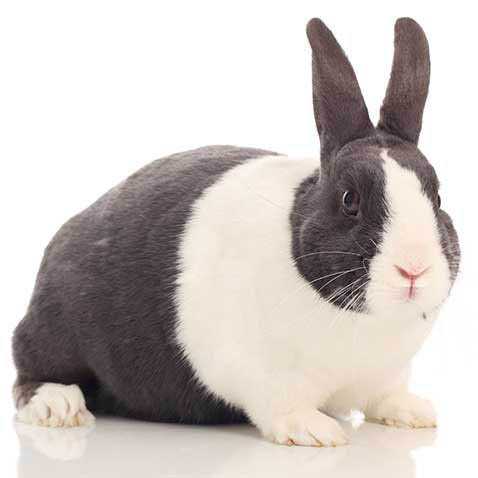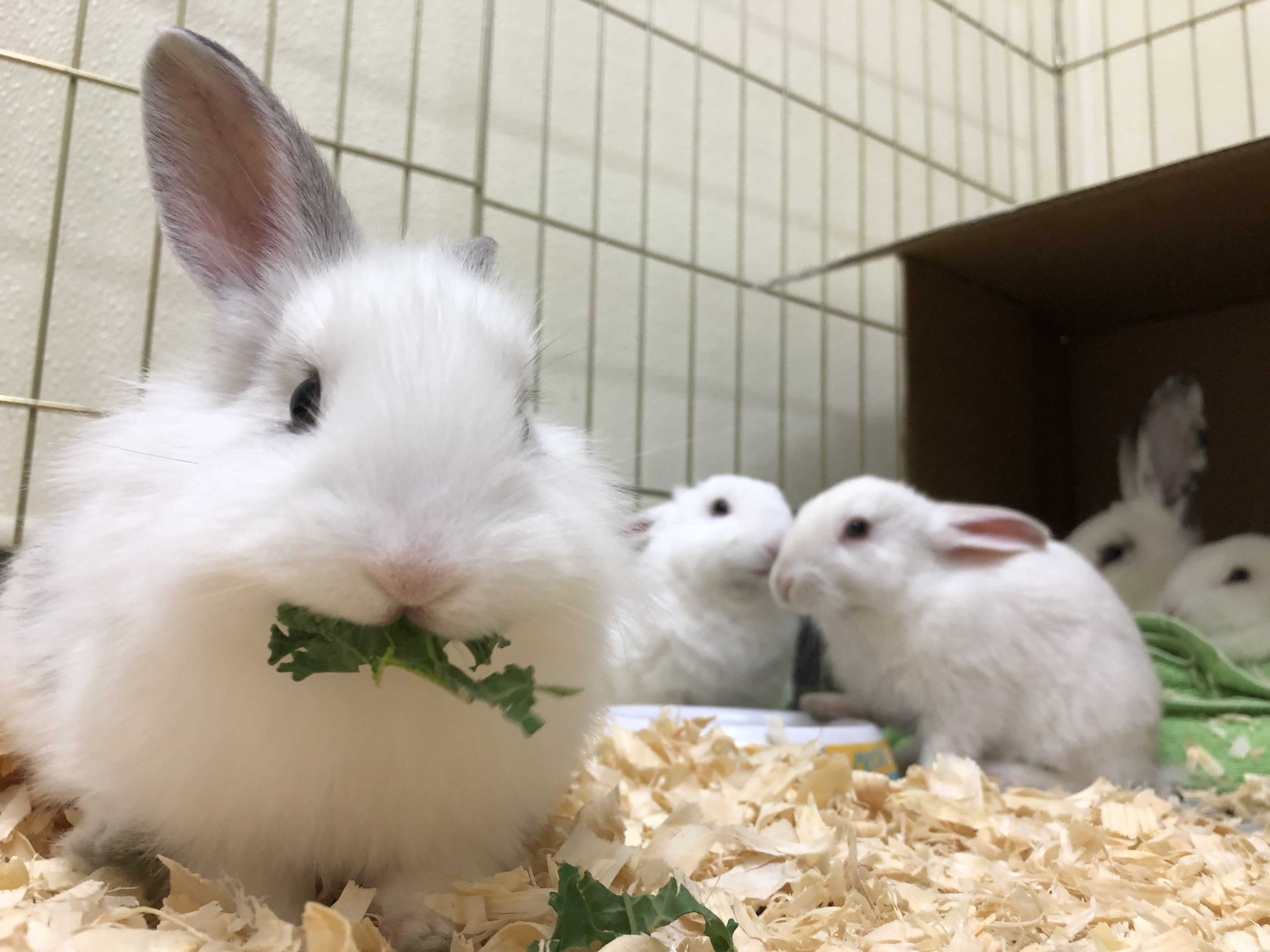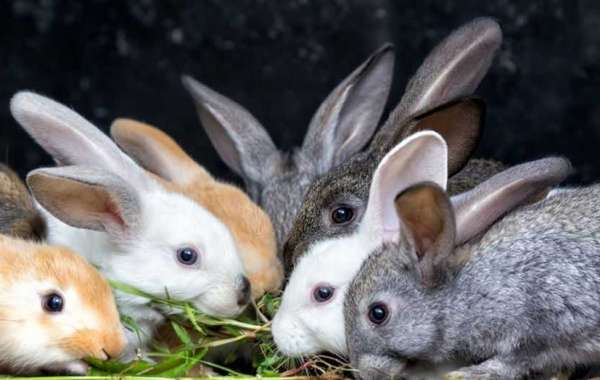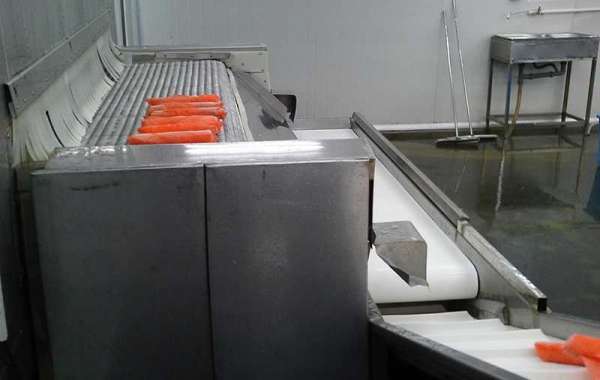How to Care for a Pet Rabbit
Rabbits are unique pets. They have specific needs in order to live a long, happy and healthy life. Here is a basic overview on how to care for a pet rabbit:

Step 1: Set Up Safe Indoor Housing
There are several options to house rabbits inside. They can live free-reign in a bunny proofed room/rooms, or they can be contained within a puppy pen, bunny condo, or large rabbit cage. If contained, their space should always be large enough so they can hop around, and they should be let out of their pen for at least a few hours everyday for exercise.
Make sure the primary location of your rabbit is not isolated from you and your family. A family room or living room is a good place.
Step 2: Bunny Proof Your House
Rabbits need space to run around and explore. In order to create a safe space for your bunny and to protect your belongings, you will need to thoroughly bunny proof the area. This includes covering all wires with plastic sleeves or flex tubing, or lifting them 3-4 feet out of reach of your rabbit.
If you don’t want your baseboards gnawed, you can cover them with plastic guards, 2x4s or furring strips. You’ll also have to block off certain areas since rabbits like to chew the undersides of beds, items on bookshelves, house plants, and more. Basically, your rabbit will try to chew everything in reach.
Step 3: Provide Fresh Hay
A rabbit’s diet should mainly consist of hay. Fresh hay should be provided to rabbits at all times. Baby rabbits should be given alfalfa, and adult rabbits should be fed timothy hay, grass hay, or oat hay. Using a large hay feeder is helpful because it keeps large amounts of hay dry, clean, and accessible.
Using a large hay feeder is helpful because it keeps large amounts of hay dry, clean, and accessible.
Step 4: Provide Fresh Greens, Fiber-rich Pellets, and Fresh Water
Rabbit eating greensSupplement your rabbit’s hay with fresh vegetables, fiber-rich pellets (in limited quantities for adult rabbits), and fresh water daily. You can learn more about what kinds of food to feed your bunny. You can also learn about growing many of your rabbit’s favorite vegetables
Step 5: Set Up a Litter Box
Rabbit in litter box. Rabbits have a natural inclination to poop and pee in one area. Take advantage of this by setting up a medium-sized cat litter box or shallow storage bin near their food/water bowls and hay feeder.
Put a thin layer of rabbit-safe, recycled newspaper pellet litter at the bottom of the litter box. Do not use clay/clumping cat litter or wood shavings, as they are not safe for rabbits. Then put hay on top of the litter. Rabbits like to eat hay and poop at the same time, so this will encourage good litter box habits.
Step 6: Provide Enrichment
Rabbits can get bored easily. Not only do they need space to exercise, they also need mental stimulation. Cardboard castles are great because rabbits spend hours chewing new windows and doorways. Cardboard castles also provide a quiet refuge for the rabbit when necessary.
You can also provide a variety of toys for your rabbit to pique his or her interest.
Step 7: Groom Your Rabbit
Rabbit's nailsRabbits are naturally clean animals and wash themselves frequently. But you still need to groom your rabbit on a regular basis. Rabbits go through shedding cycles a couple times a year. It’s important to brush your rabbit to remove all the excess fur. Otherwise, your rabbit could ingest it and have serious digestive issues. Learn more about keeping your rabbit looking and feeling sharp in our article, Grooming Your House Rabbit. Regular nail clipping is also important because long nails can get snagged on things or they can curl into your rabbit’s paw.
Regular nail clipping is also important because long nails can get snagged on things or they can curl into your rabbit’s paw.
Step 8: Bring Your Rabbit to a Rabbit-Savvy Vet
Rabbits are prey animals, and so their natural instinct is to hide any symptoms of illness. You must keep a watchful eye to ensure your rabbit is eating, drinking, pooping, and peeing regularly. If you notice any change in behavior, it is important to call a rabbit-savvy vet immediately.
In addition to responding to illness, it is also essential to bring your rabbit in for regular veterinary checkups. The vet can check the ears, eyes, teeth, and gut to make sure the rabbit is in good health. Finally, consider spaying or neutering your rabbit. Spaying/neutering can reduce aggressive behavior, improve litter box habits, and improve a rabbit’s overall health.
Find a rabbit-savvy vet in your area at the House Rabbit Society Veterinarian Index.
Step 9: Understand Rabbits’ Unique Language and Behavior
Sleeping rabbitPet rabbits are different from cats and dogs. It’s essential to understand how rabbits think so you and your rabbit can live a happy life together.  Rabbit Behavior Explained and demystify unfavorable rabbit behavior by reading Help! My Rabbit Hates Me!. By catering to your rabbit’s natural inclinations, you can build a trusting, loving relationship with your bunny.
Rabbit Behavior Explained and demystify unfavorable rabbit behavior by reading Help! My Rabbit Hates Me!. By catering to your rabbit’s natural inclinations, you can build a trusting, loving relationship with your bunny.









